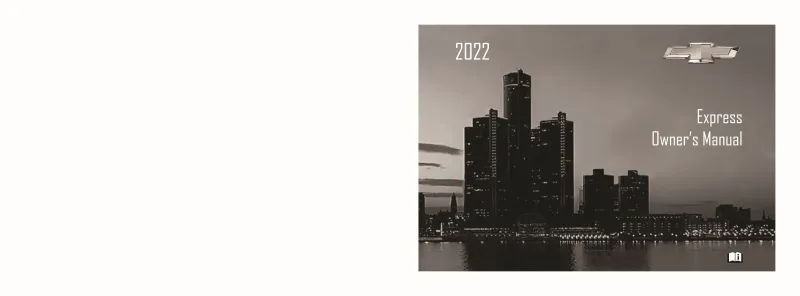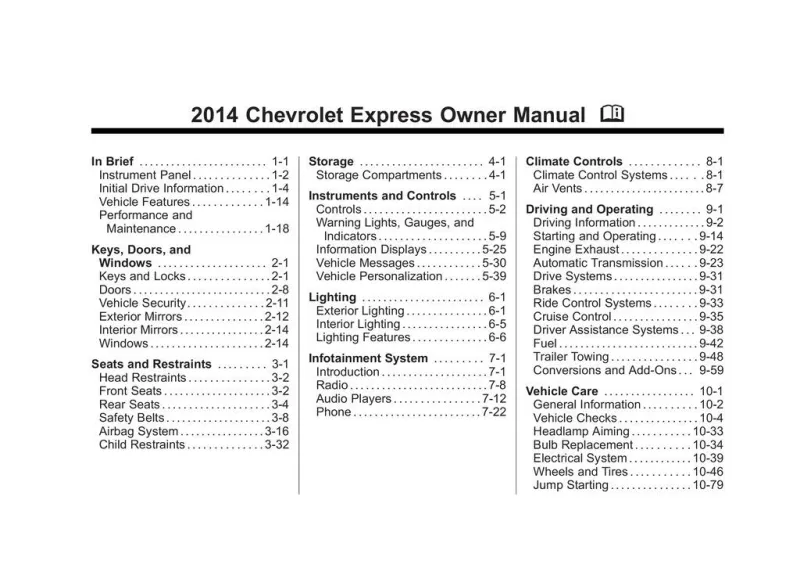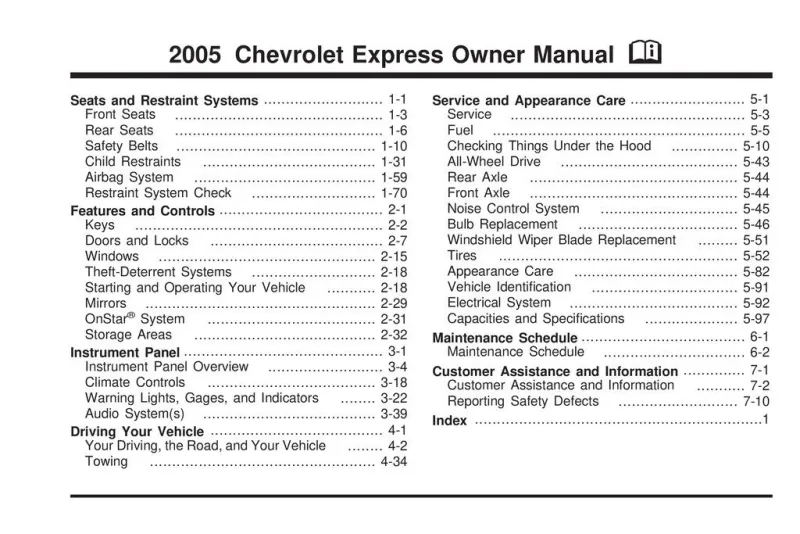Chevrolet Express owners manuals

(owner manual)

(owner manual)

(owner manual)

(owner manual)

(owner manual)

(owner manual)

(owner manual)

(owner manual)

(owner manual)

(owner manual)

(owner manual)

(owner manual)

(owner manual)

(owner manual)

(owner manual)

(owner manual)

(owner manual)

(owner manual)

(owner manual)

(owner manual)

(owner manual)

(owner manual)

(owner manual)

(owner manual)

(owner manual)

Chevrolet Express specs
Owner Manual
Chevrolet Express is a full-size van that is versatile and can be used in personal and business purposes. The owner manual is an in-depth manual that reveals information on the operation of the vehicle, safety amenities, service timetables and troubleshooting among other important bits of information. The owners will be able to optimize the performance and life of their van by adhering to the advice, which is presented in this manual. It includes some fundamental issues like the fuel regulation, the recommended tire pressure, the vehicle lighting, and the basic fluid inspections that all the owners have to be conversant with to make sure that their cars operate optimally.
Model Overview
Chevrolet Express is famous by its reliability and durability which makes it a successful product among the fleets and individuals. The model has two major configurations, which were Express 2500 and Express 3500. Express 2500 is ideal in the case of the business that requires a powerful workhorse capable of sustaining heavy weight without sacrificing on the comfort aspect. On the other hand, the Express 3500 has increased towing capacities which makes them more suitable in vigorous use. The Express will come in various forms which include passenger forms or cargo vans in a variety of wheelbase lengths and types of body according to different customer requirements.
Trims
Chevrolet Express comes in various trims and each is supposed to provide a balance between utility and comfort. The LS base trim will be with the standard features, whereas the LT trim will include the luxurious things such as better upholstery, superior infotainment, and driving assistance technologies. To the business oriented consumers, the cargo-oriented trims which include the cargo van are practical in terms of shelf-life and not only in terms of seating. In addition, customization features such as roof height and long wheelbase will enable owners to adapt their cars to their requirements.
Known Problems
Like with any car, there are a couple of known problems that should be noticed by the Chevrolet Express owners. Some of the common complaints are the transmission issues especially in the old models where they include slipping or hard shifting during gear changes. Electrical problems have been complained as well, but they are generally related to the lighting and power accessories of the van just breaking down every now and then. Also, some of the owners have complained of the excessive rust development especially in areas with bitter winters. With frequent check-ups and timely maintenance, most of such potential issues can be reduced.
Maintenance Tips
Maintenance is essential in order to make the Chevrolet Express long lasting and efficient. It is most important to change the oil frequently and this will prevent the running of the engine. Checking of the brakes, transmission fluid, and the coolant should also be checked on a regular basis. Maintenance of tires should involve rotation and checking of the pressure because this would significantly boost the fuel consumption and also increase the life of tires. Also, it is possible to adhere to the maintenance routine presented in the owner manual that is recommended to change the filters and inspect the car in order to avoid larger problems in the future.
FAQs
Q: What kind of gas does my Chevrolet Express take?
A: Chevrolet Express is usually powered on a regular unleaded gasoline, though some might have flex-fuel engines, which can work on E85 ethanol. The fuel requirements of your model always refer to an owner manual.
Q: Can you please tell me how often do I service my Chevrolet Express?
A: The suggested service interval may change depending on the use of the car, however, on average, you need to target a regular service after every 3,000 to 7,500 miles or refer to the owner manual. This consists of changing of oil and other fluids.
Chevrolet Express PDF owner manual
Chevrolet Express competitors
Chevrolet Express Manual Questions
Fill the form below and someone will help you!



